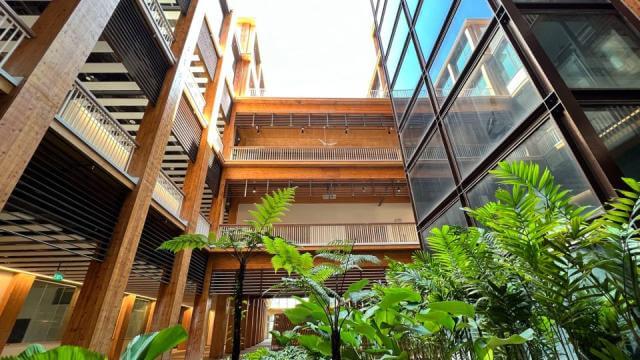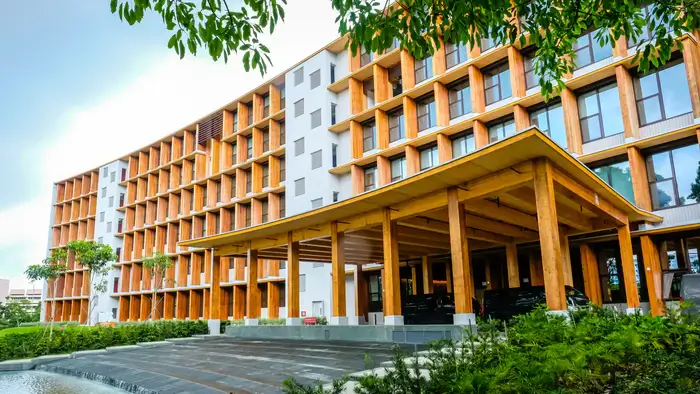Inside Gaia: Asia’s Largest Timber Building Blending Nature and Architecture
Singapore’s Nanyang Technological University unveils Gaia, a new largest timber building that exemplifies the city’s commitment to being a “garden city.”
Designed by Toyo Ito, the six-story campus building incorporates natural elements and offers a unique environment for students.
Gaia boasts sunlit atriums, open-air study areas, and elevators that descend into lush beds of tropical plants.
The building’s architectural features, including handrails, door frames, and room dividers, are all constructed using wood.
The exposed timber frame creates a forest-like ambiance and provides visitors with a sense of walking amidst trees.
As Asia’s largest timber building, Gaia utilizes mass timber, an innovative engineered wood. The structure is made almost entirely from mass timber, demonstrating the material’s versatility in architecture.
The use of wood for beams and columns showcases the potential for sustainable construction practices.
Shifting Perspectives on Largest Timber Building Architecture in Asia

While wooden structures have gained popularity globally, Asian cities have been slower to embrace the trend.
Singapore’s building codes restricted timber architecture to a height of 24 meters until recently. However, attitudes are changing rapidly, and Singapore is leading the way in making sustainable and biophilic architecture a reality.
Mass timber offers various environmental advantages over traditional building materials. Trees absorb carbon dioxide, and when turned into mass timber, they sequester the carbon, reducing the environmental footprint of construction.
Timber’s natural insulation properties contribute to energy efficiency, making Gaia a “zero energy” building. Strategic shading and passive cooling techniques further enhance the structure’s energy efficiency.
Toyo Ito’s design philosophy prioritizes comfort and well-being. Gaia’s largest timber building integration of nature and architectural elements aims to create spaces where people feel inspired and at ease.
The building’s design aligns with research suggesting that wood-based architecture can contribute to reduced stress levels and improved occupant well-being.





